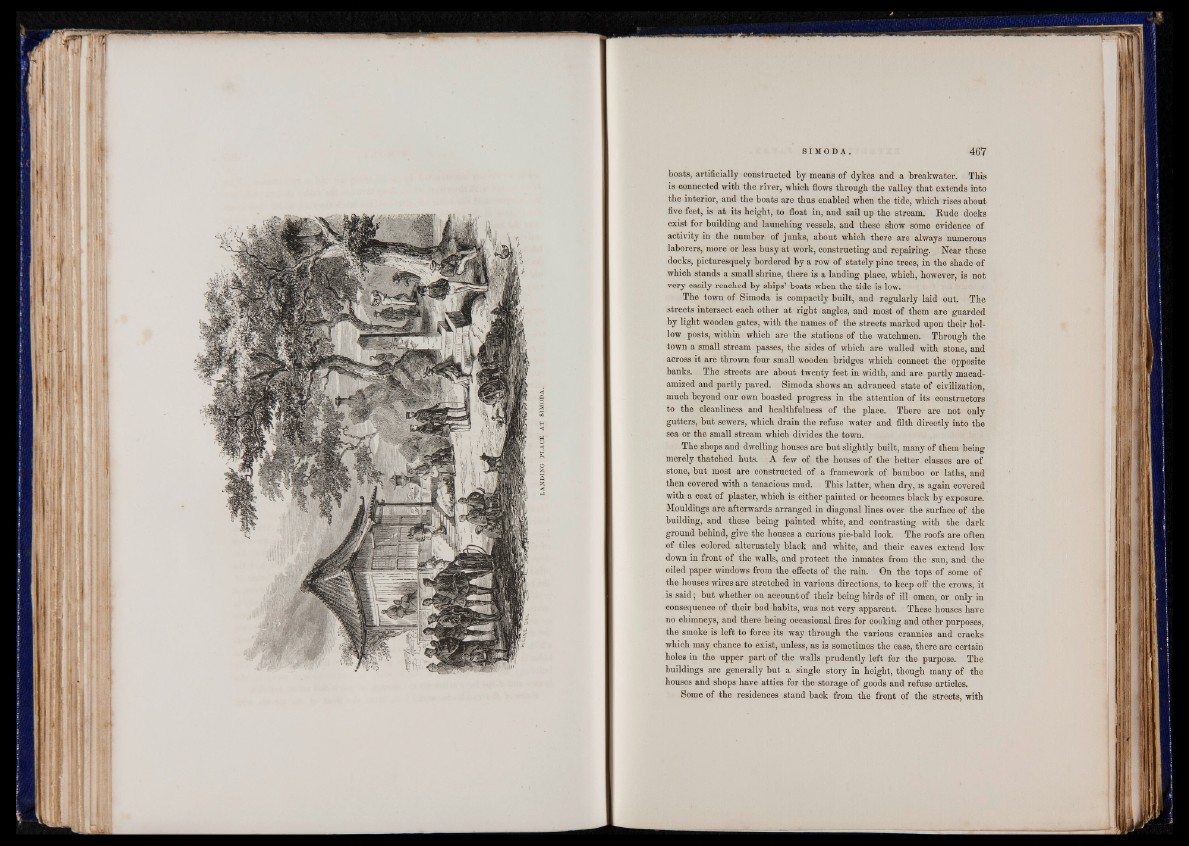
LANDING PLACE AT SIMODA.
S IMODA. 467
boats, artificially constructed by means of dykes and a breakwater. This
is oonnected with the river, which flows through the valley that extends into
the interior, and the boats are thus enabled when the tide, which rises about
five feet, is at its height, to float in, and sail up the stream. Rude docks
exist for building and launching vessels, and these show some evidence of
activity in the number of junks, about which there are always numerous
laborers, more or less busy at work, constructing and repairing. Near these
docks, picturesquely bordered by a row of stately pine trees, in the shade of
which stands a small shrine, there is a landing place, which, however, is not
very easily reached by ships’ boats when the tide is low.
The town of Simoda is compactly built, and regularly laid out. The
streets intersect each other at right angles, and most of them are guarded
by light wooden gates, with the names of the streets marked upon their hollow
posts, within which are the stations of the watchmen. Through the
town a small stream passes, the sides of which are walled with stone, and
across it are thrown four small wooden bridges which connect the opposite
banks. The streets are about twenty feet in width, and are partly macadamized
and partly paved. Simoda shows an advanced state of civilization,
much beyond our own boasted progress in the attention of its constructors
to the cleanliness and healthfulness of the place. There are not only
gutters, but sewers, which drain the refuse water and filth directly into the
sea or the small stream which divides the town.
The shops and dwelling houses are but slightly built, many of them being
merely thatched huts. A few of the houses of the better classes are of
stone, but most are constructed of a framework of bamboo or laths, and
then covered with a tenacious mud. This latter, when dry, is again covered
with a coat of plaster, which is either painted or becomes black by exposure.
Mouldings are afterwards arranged in diagonal lines over the surface of the
building, and these being painted white, and contrasting with the dark
ground behind, give the houses a curious pie-bald look. The roofs are often
of tiles colored alternately black and white, and their eaves extend low
down in front of the walls, and protect the inmates from the sun, and the
oiled paper windows from the effects of the rain. On the tops of some of
the houses wires are stretched in various directions, to keep off the crows, it
is said; but whether on account of their being birds of ill omen, or only in
consequence of their bad habits, was not very apparent. These houses have
no chimneys, and there being occasional fires for cooking and other purposes,
the smoke is left to force its way through the various crannies and cracks
which may chance to exist, unless, as is sometimes the case, there are certain
holes in the upper part of the walls prudently left for the purpose. The
buildings are generally but a single story in height, though many of the
houses and shops have attics for the storage of goods and refuse articles.
Some of the residences stand back from the front of the streets, with